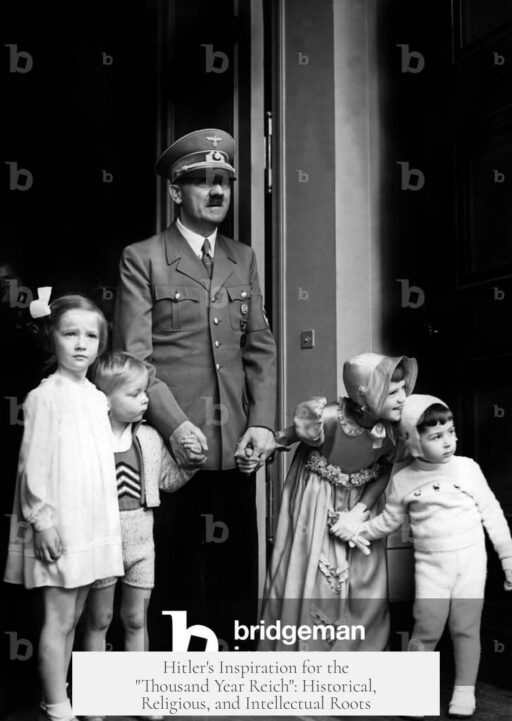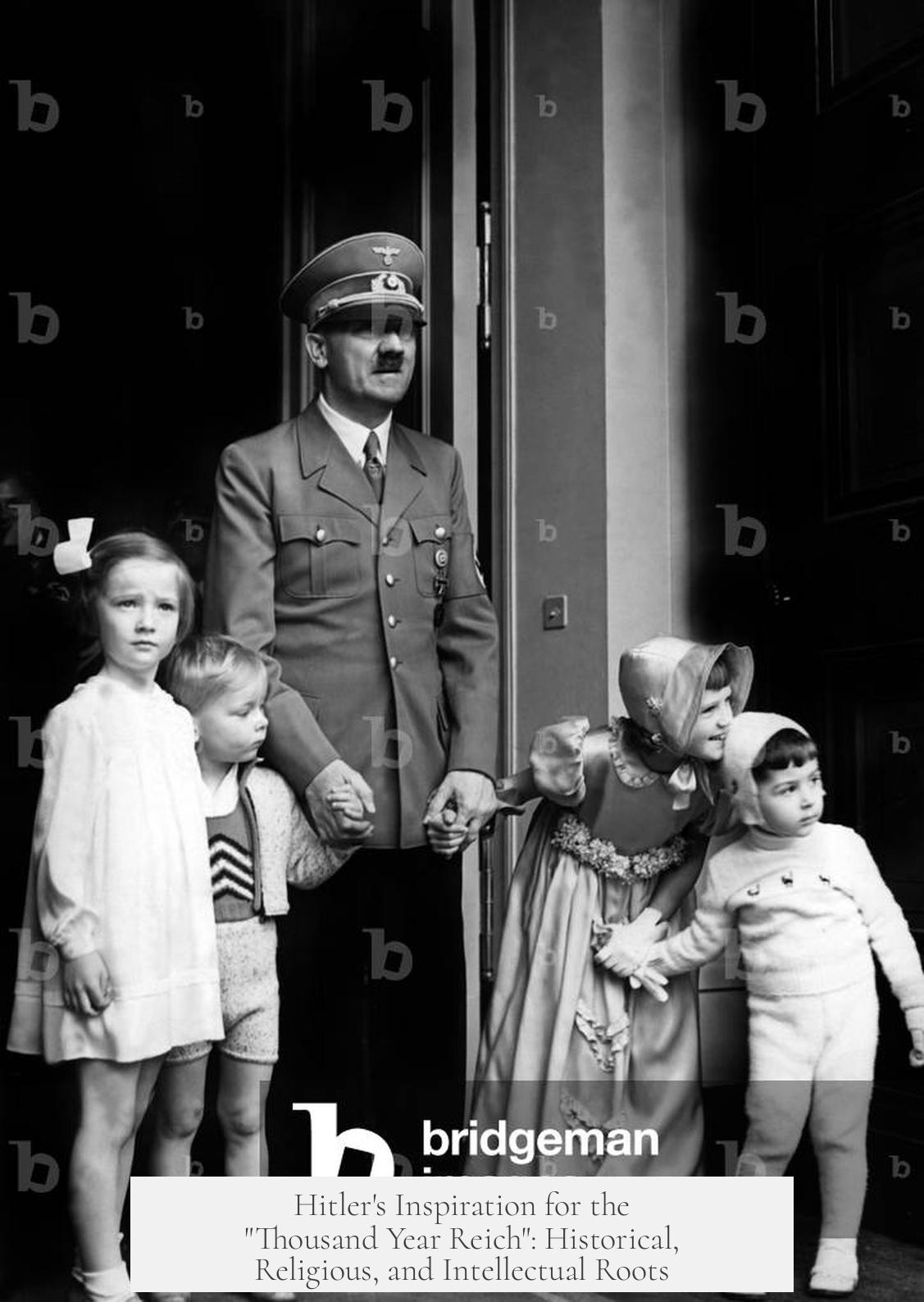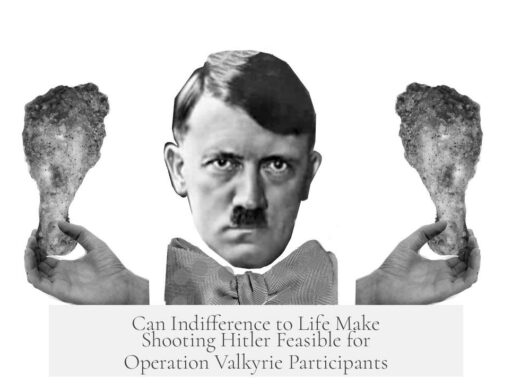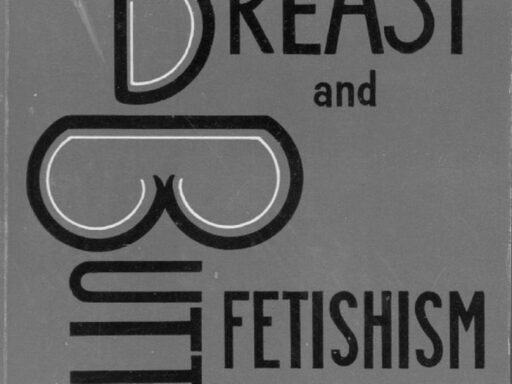Hitler derived the idea of the “Thousand Year Reich” mainly from historical, religious, and ideological sources that combined to shape Nazi vision.
The term “Thousand Year Reich” links directly to the Holy Roman Empire, which lasted nearly a thousand years. Hitler saw the Holy Roman Empire as the First Reich, an early and powerful German state. The German Empire, established in 1871, was viewed as the Second Reich. Hitler intended his regime to be the Third Reich, surpassing both predecessors in power and longevity by lasting a thousand years.
Religious ideas also influenced the concept. Millennialism, a radical Christian belief, claims that Christ will return and reign for a thousand years. This idea of a perfect, long-lasting reign inspired the Nazis to frame Hitler’s rule as a messianic epoch lasting a millennium.
A key intellectual source was Arthur Moeller van den Bruck’s book Das Dritte Reich, published in the early 1920s. Van den Bruck divided German history into three “Reichs”: the First, the Second, and a forthcoming Third Reich. He predicted that the Third Reich’s leader would be a “German Messiah,” a figure who would restore Germany’s greatness. This ideology gave Hitler a quasi-religious status among his followers. Nazi propaganda echoed this vision, portraying Hitler as a destined leader whose rule would endure for a thousand years.
| Source | Contribution to “Thousand Year Reich” |
|---|---|
| Holy Roman Empire | Inspiration for the “First Reich,” nearly 1000 years; model for longevity |
| Millennialism | Religious belief in a 1000-year reign relating to divine rule |
| Arthur Moeller van den Bruck | Divided German history into three Reichs; framed Hitler as the messianic leader of the Third Reich |
Hitler’s vision of the “Thousand Year Reich” therefore combines a desire for historical continuity, religious symbolism, and nationalist ideology. Each component supported the mythos required to legitimize Nazi rule and its grand ambitions.
- The Holy Roman Empire’s nearly 1000-year existence inspired Hitler’s Reich concept.
- Millennialism provided religious justification for a long, divine reign.
- Van den Bruck’s book popularized the “Three Reichs” framework and messianic leadership.
- Nazi propaganda merged these ideas to elevate Hitler’s regime as destined and eternal.
Where Did Hitler Come Up with the Idea of the “Thousand Year Reich”?
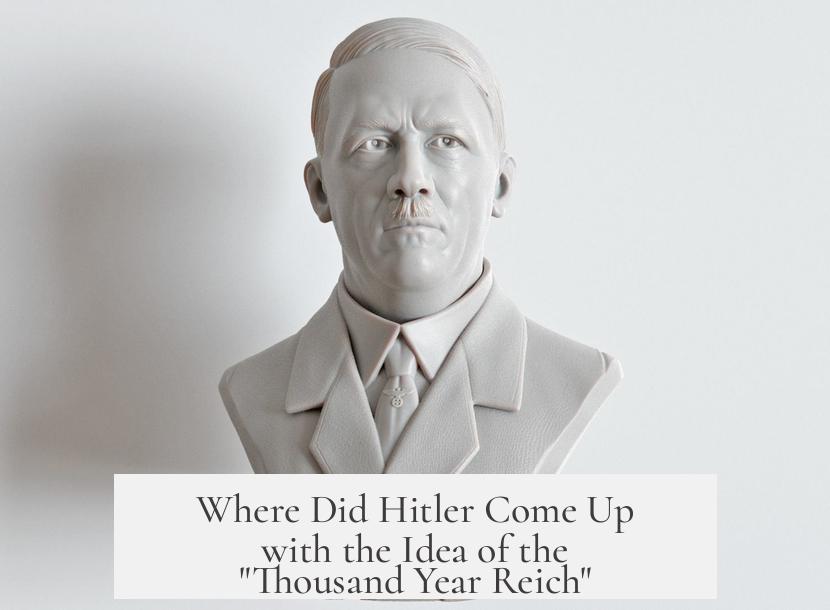
Hitler’s concept of the “Thousand Year Reich” draws from three key sources: the legacy of the Holy Roman Empire, the religious idea of millennialism, and the ideological influence of Arthur Moeller van den Bruck’s book Das Dritte Reich. But how did these pieces come together to inspire one of history’s most infamous slogans? Let’s break it down.
Picture Germany in the aftermath of World War I. The proud empire had crumbled. Amidst the ruins, Hitler sought not just a revival but a reinvention. His idea for a “Thousand Year Reich” wasn’t plucked from thin air. Instead, it was a calculated blend of historical legacy, religious symbolism, and political ideology wrapped in a powerful narrative.
A Nod to the Past: The Holy Roman Empire’s Shadow
First off, the “thousand years” figure roughly mirrors the length of the Holy Roman Empire, which lasted about a millennium from 800 to 1806. Hitler saw this ancient empire as the First Reich — a symbol of enduring Germanic greatness.
Then came the Second Reich, the German Empire under the Kaiser from 1871 until 1918. This was recent history but ended with defeat and humiliation.
Hitler aimed to continue this historical trilogy with his regime: the Third Reich. The name itself promised longevity and grandeur to match or surpass the First Reich’s legacy.
So, the idea wasn’t just aspirational. It was about linking the Nazis to a proud German tradition lasting centuries. Hitler virtually told the German people: “This is the next chapter in your glorious history.”
Millennialism: The Religious Layer
Here’s where it gets interesting. Radical Christian ideas, specifically millennialism, likely flavored the concept.
Millennialism is the belief that Jesus Christ will return and rule the world for a thousand years — a “golden era” of peace and justice.
Hitler and his circle were not orthodox Christians, but these millennial ideas added potent religious symbolism to his promise. The “Thousand Year Reich” wasn’t just political; it carried an almost divine, destined air.
To many Nazis, Hitler wasn’t just a leader; he was a messianic figure foreordained to bring about a new era.
The Intellectual Spark: Arthur Moeller van den Bruck’s Das Dritte Reich
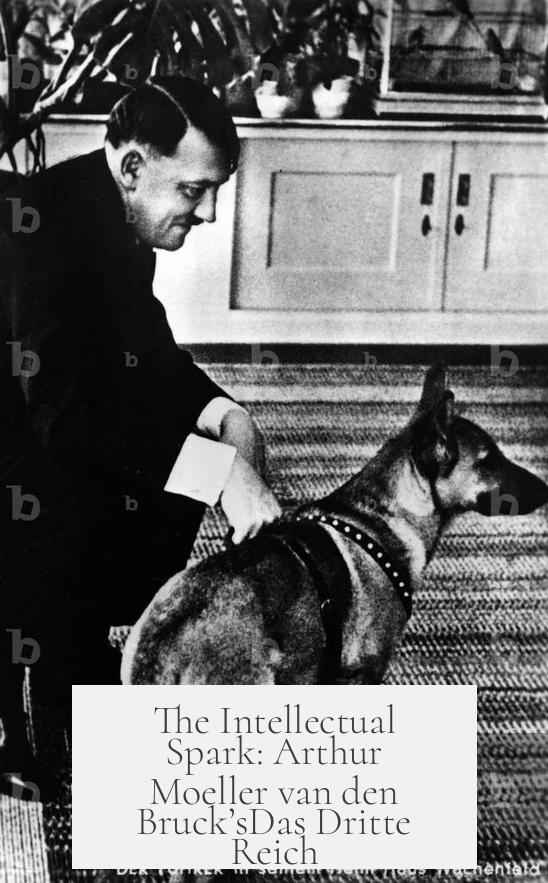
The intellectual backbone of the “Third Reich” title and the “Thousand Year Reich” concept lies with a German cultural critic, Arthur Moeller van den Bruck.
In his 1923 book Das Dritte Reich, he divided German history into three distinct eras: the First Reich (Holy Roman Empire), the Second Reich (German Empire), and an inevitable Third Reich yet to come.
Van den Bruck envisioned the Third Reich as a powerful national renaissance, led by a ‘German Messiah’—a visionary leader who would restore Germany to greatness.
Hitler, rising in the early 1920s, found this framing irresistible. It gave his movement historical weight and messianic purpose.
Van den Bruck’s terminology cemented the idea of a new Reich lasting a millennium, connecting history, myth, and future aspirations in one powerful slogan.
Why This Matters: Understanding the Thousand Year Reich Myth
The metaphor of 1,000 years packed history, religion, and politics into a single promise that was easy to rally behind.
Hitler didn’t invent the idea alone. He rode on centuries of legacy and millennial hopes long familiar to his audience. This deep-rooted symbolism made his promises feel almost inevitable and sacred.
Yet, the stark truth? The “Thousand Year Reich” lasted a mere 12 years before it crumbled in 1945.
This irony underlines the danger of mistaking historic myths and religious fervor for political reality.
Some Food for Thought
- Was Hitler’s use of the “Thousand Year Reich” mainly clever marketing, or did he truly see himself as a messianic figure? The answer probably mixes both.
- How much do modern political slogans still lean on historical symbols and religious ideas to gain traction?
- If the whole concept was inspired partly by a book from the early 1920s, what does this say about how literature can shape politics dramatically?
Final Recommendations When Exploring This Topic
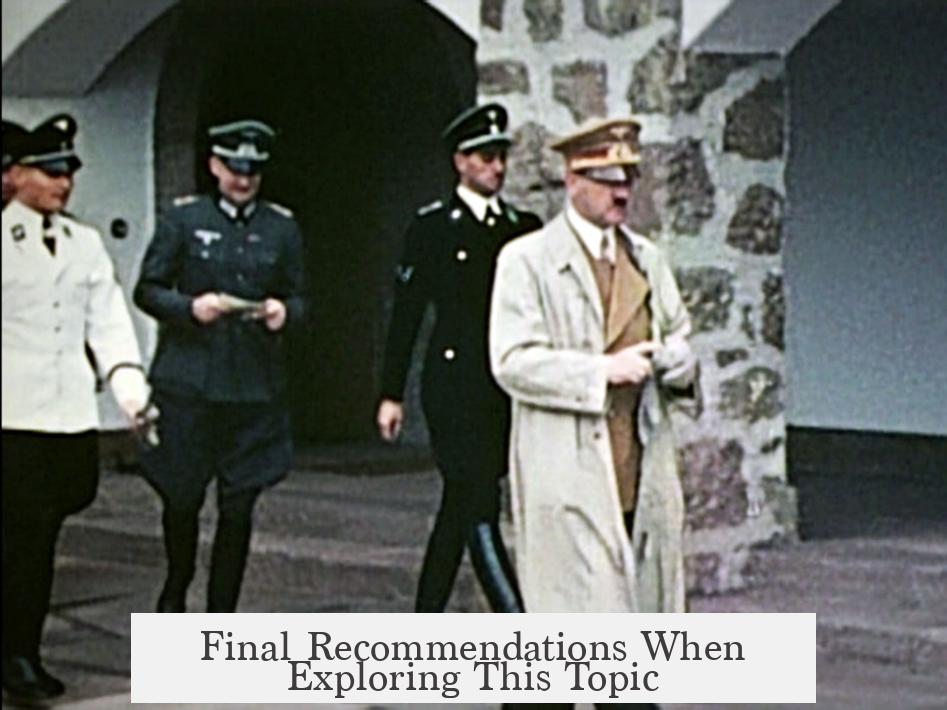
If you want to dig deeper, start with a read of Arthur Moeller van den Bruck’s Das Dritte Reich to see the roots of the Reich idea. Then work back into how the Holy Roman Empire’s image was revived in nationalist thought.
Knowing the religious millennial background will also help you understand how Nazi propaganda wasn’t just political but emotionally and symbolically charged.
This context helps unravel the complex layers behind one of history’s most chilling slogans and reminds us why critical thinking matters when history and politics blend.
In Conclusion
The idea of the “Thousand Year Reich” didn’t emerge overnight. It’s a cocktail of historical pride, millennial religious ideas, and cultural writing that Hitler and the Nazis used masterfully.
Combining these influences gave Hitler’s dream a veneer of inevitability and grandeur — something that resonated deeply with a hurt and humiliated nation.
Understanding where the idea came from clears away the myth to reveal a complex blend of history, faith, and politics. It’s a stark reminder: grand political promises often carry deeper, older stories behind them.
